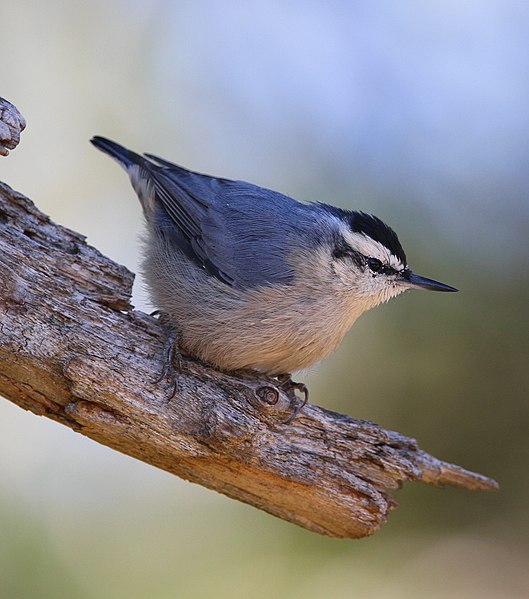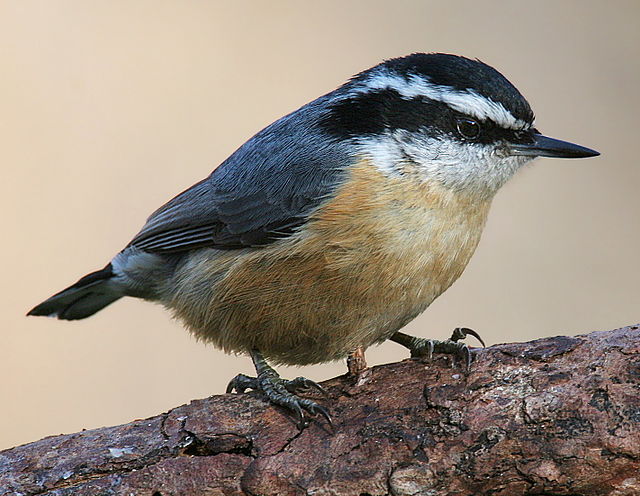The Corsican nuthatch is a species of bird in the nuthatch family Sittidae. It is a relatively small nuthatch, measuring about 12 cm (4.7 in) in overall length. The upperparts are bluish gray, the underparts grayish white. The male is distinguished from the female by its entirely black crown. The species is sedentary, territorial and not very shy. It often feeds high in Corsican pines, consuming mainly pine nuts, but also catching some flying insects. The breeding season takes place between April and May; the nest is placed in the trunk of an old pine, and the clutch has five to six eggs. The young fledge 22 to 24 days after hatching.
Corsican nuthatch
The first plate depicting the species, in this case a pair (male above and female below), and accompanying the June 1884 publication by Richard Bowdler Sharpe.
A female in the gorges of Restonica near Corte, has a dark gray crown towards the front blending rapidly into the gray-blue of the back.
The Corsican nuthatch is an agile bird that likes to prospect upside down.
The nuthatches constitute a genus, Sitta, of small passerine birds belonging to the family Sittidae. Characterised by large heads, short tails, and powerful bills and feet, nuthatches advertise their territory using loud, simple songs. Most species exhibit grey or bluish upperparts and a black eye stripe.
Nuthatch
The red-breasted nuthatch is said to have a callⓘ like a tin trumpet.
Image: White cheeked Nuthatch (Sitta leucopsis) (39661424053) (cropped)
Image: Przevalski's nuthatch Chengdong Wang (cropped)








